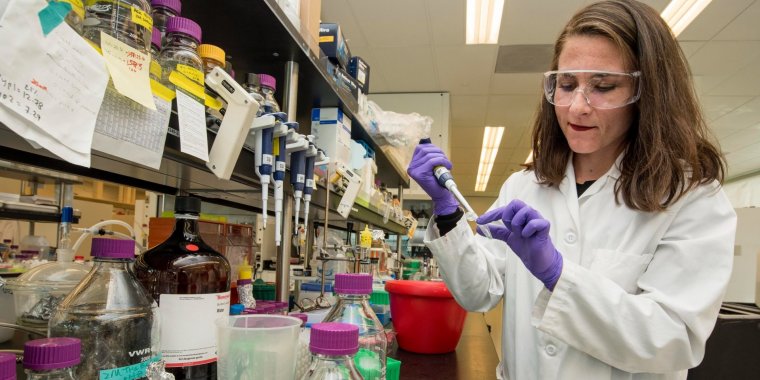| Health / Health News |
Cancer Cells Destroyed in Experimental Treatment without Using Any Drugs
One of the latest methods pioneered by scientists to treat cancer uses a Trojan horse sneak attack to prompt cancer cells to self-destruct – all without using any drugs.

Cancer cells destroyed in experimental treatment without using any drugs. Photo: Science in HD/Unsplash
Key to the technique is the use of a nanoparticle coated in a specific amino acid called L-phenylalanine, one of several such acids that cancer cells rely on to grow. L-phenylalanine isn't made by the body, but absorbed from meat and dairy products, ScienceAlert reported.
In tests on mice, the nanoparticle – called Nano-pPAAM or Nanoscopic phenylalanine Porous Amino Acid Mimic – killed cancer cells specifically and effectively, posing as a friendly amino acid before causing the cells to destroy themselves.
The self-destruction mode is triggered as the nanoparticle puts production of certain chemicals known as reactive oxygen species (ROS) into overdrive. It's enough to bring down the cancer cells while leaving neighbouring, healthy cells intact.
"Against conventional wisdom, our approach involved using the nanomaterial as a drug instead [of] as a drug-carrier," says material scientist Dalton Tay from Nanyang Technological University in Singapore.
"Here, the cancer-selective and killing properties of Nano-pPAAM are intrinsic and do not need to be activated by any external stimuli. The amino acid L-phenylalanine acts as a Trojan horse – a cloak to mask the nanotherapeutic on the inside."
Nano-pPAAM was shown to kill around 80 percent of breast, skin, and gastric cancer cells in mice, about on a par with current chemotherapy drugs (but without all the side effects of course). While dangerous to cancer cells, it's based on a silica nanoparticle classed as safe to humans by US food regulators.
The approach should simplify the production of this kind of treatment, though there's some way to go before these lab tests will lead to effective treatments for people. So far only lab and mice tests have been carried out, but the early results are promising – just one of several ways scientists are trying to rid the body of cancer.
Plenty of recent studies have looked at ways in which nanoparticles can better target cancer cells without disrupting the rest of the body too much, but they're usually loaded up with drugs, which isn't the case here.
That will help in recurrent cancers that eventually become resistant to the drugs we bombard them with: here there are no drugs involved, so there's nothing to become resistant to.
"This novel approach could hold much promise for cancer cells that have failed to respond to conventional treatment like chemotherapy," says breast cancer specialist Tan Ern Yu from Tan Tock Seng Hospital in Singapore, who wasn't involved in the study. (Tasnim News Agency)
YOU MAY ALSO LIKE





